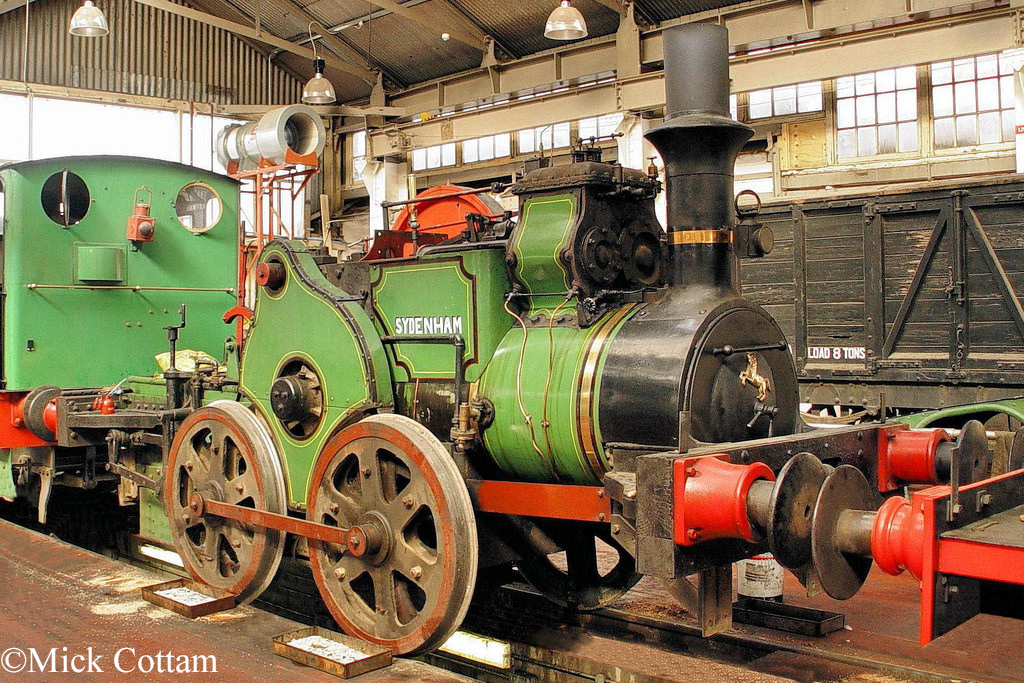
| Driving Wheels | 4ft 0ins |
| Boiler Pressure | 180psi |
| Cylinders | Low Pressure – 7in x 13in
High Pressure – 13in x 13in |
| Tractive Effort | 9,033lbf |
This locomotive was built by Aveling & Porter in 1895. It is basically a road traction engine that was fitted with flanged wheels to allow it to run on rails. It is a compound and thus it has a small diameter high-pressure cylinder and a large diameter low-pressure cylinder. Both are mounted on top of the boiler and drive the four wheels via a system of gears. Water is carried in a rear mounted ‘tender tank’ and fed to the boiler with either the injector or pump.
The locomotive was originally used at the Erith, Kent, wharf of Beadle Brothers (later William Cory and Sons). It worked there until 1924 when it was sold to the neighbouring Erith Oil Works, who had it rebuilt in 1931.
Erith Oil Works later became British Oil and Cake Mills. In about 1953 they purchased a diesel shunter and Sydenham was laid up, with the company’s other Aveling and Porter locomotive being retained as a spare.
Eventually, in the early 1960s, Sydenham was acquired by the Enfield Veteran and Vintage Vehicle Society, and ownership was later transferred to the Quainton Railway Society (QRS). It was stored in Luton before being delivered to the Buckinghamshire Railway Centre at Quainton in April 1969.
Sydenham was loaned to the North Kent Industrial Locomotive Society (Chatham Dockyard) initially in return for them restoring her to full working order. The loan was originally for a twelve year period but the locomotives stay at Chatham was extended from 2009 until 2014.
In May 2014 Sydenham returned to Quainton at the end of its loan period. It is currently being assessed for another 10-year overhaul, with tubes removed ready for a boiler inspection.
